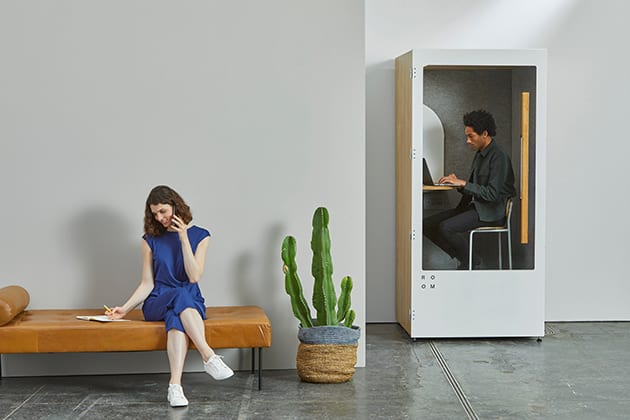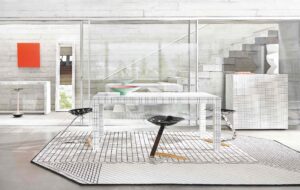 |||
|||
Silicon Valley is no longer just a geographical location, it’s a state-of-mind. The “fail fast, succeed quicker” mindset that took start-ups from the garage to the global stage has arrived in the U.K. Over a third of Europe’s fastest-growing tech companies are now based in Britain, and London is the hub of it all, with 45 tech ‘unicorns’ based within the city limits.
Raw creativity and ingenuity is the fuel that keeps this innovation engine running. Industries, platforms and technologies may change, but one need stays the same: to find and keep the best people. Companies must find and develop people who think differently, who see complex business challenges in a new light, and who aren’t afraid to bring forward unconventional solutions.
Diversity, and specifically neurodiversity, is a catalyst for innovation. According to the National Symposium on Neurodiversity, “neurodiversity is a concept where neurological differences are to be recognised and respected as any other human variation; these differences can include those labeled with dyspraxia, dyslexia, attention deficit hyperactivity disorder (ADHD), dyscalculia, autism spectrum disorder, Tourette syndrome, and others.” Simply put, people who learn and think differently bring different skills and different solutions that are critical to success in the modern age of business.

To invent the sewing machine, all we needed to do was see the needle upside-down.
It’s estimated that nearly ten percent of the population of the U.K. is neurodiverse. However, these innovative and hyper-creative individuals continue to be underrepresented in the workforce because the modern workplace restricts their abilities, instead of harnessing them.
Read more: How design can take workplace wellbeing to the next level
By aligning the physical, digital and social landscape of the workplace, organisations can create a cultural balance in order to turn their offices into incubators of innovation, and allow neurodiverse employees to flourish.
Physical environment
Different neurological divergences present different needs for the physical environment. While some neurodivergent individuals become easily overstimulated by spontaneous social interaction at work, others crave high-spontaneity environments to jumpstart their creativity. Thus, the concept of ‘Universal Design’ becomes a guiding principle for restructuring physical spaces for neurodiversity.
Universal Design is the simple idea that environments should be designed and composed in such a way that they can be accessed, understood and utilised to the greatest extent by all people. For physical environments, this principle is implemented in many different ways:
1. Create spaces designed for collaboration and focus
Having a variety of ‘micro-environments’ within the larger office space is crucial. Individuals on the autism spectrum often exhibit the ability to ‘hyperfocus;’ i.e. spend prolonged periods of time intensely focused on one task or problem- well beyond the typical attention span of a neurotypical individual. However, fostering such moments of ‘hyperfocus’ requires a low-stimulation environment where distractions, including social interactions, are kept to a minimum. Conversely, some neurodiverse individuals, such as those with attention deficit disorder (ADD/ADHD), need more frequent ‘stimulation breaks’ than neurotypical employees. Instead of ‘distracting’ from their work, these breaks help foster creativity and divergent thinking. These individuals are better suited to working in areas designated for high-stimulation and socialisation, such as cafes and collaborative spaces.

2. Make alterations to visuals and acoustics
While being selective of visual and acoustic elements is a principle of general wellness design, these choices become paramount when designing workplaces for the spectrum of neurodiversity.
In Gary Helm’s article Neurodivergent Design, Alison Standish, founder of The Colour Ministry, said: “Giving consideration to colour is more than thinking about aesthetics. Colour has psychological and emotional impact. For many people a mix of complementary colours creates a soothing and comforting environment, but for neurodiverse people avoiding pattern and choosing a flat colour is the best choice for concentration and to avoid triggering anxieties.”
Fluorescent lights and some LEDs can flicker, sometimes imperceptibly to the naked eye, causing headaches, eyestrain, and seizures in those with epilepsy. The BRE Group reports that these types of lighting can also exacerbate the symptoms of autism and agoraphobia. Maximising natural light is often the most economical and practical solution.

Alternatively, excessive and/or irregular noise is a particular frustration for those with dyslexia, ADHD, and autism. “Psychoacoustic elements come into play in the office. Those with analytical personalities, a trait common in autism, are more likely to be distracted by shrieks of laughter or variable volume conversations. Subtle use of acoustic dampening materials can alleviate the issue and help create spaces that are more productive for everyone that uses them,” said Tony Sutton, managing director of Woven Image, in Work in Mind’s article. High-backed, upholstered sofas, portable desk dividers, and acoustic wall tiles are a few products that can be used to create a more soothing and uniform auditory environment.
3. Enable movement
Aside from the occasional treadmill desk, many offices don’t include furniture that promotes movement. While neurotypical individuals may find chairs that rock or bounce to be distracting, individuals with autism can use these furnishings to promote ‘stimming,’ short for ‘self-stimulating behaviours.’ Many neurodivergent individuals on the autism spectrum exhibit repetitive behaviours such as rocking, spinning, or hand-flapping as a means of releasing tension and regulating their moods. Environments that don’t support and enable this behaviour can be stifling and uncomfortable. It’s important to discuss the physical needs of individuals who stim and acquire furnishings that promote this behaviour.
Digital environment
For all individuals everywhere – digitisation is the great equaliser. With advanced communication technologies expanding the ‘workplace’ well beyond the four walls of an office building, employees are enabled and empowered to choose when, where and how they work best. The gig economy and rise of remote working allows neurodiverse individuals to contribute their unique skills and ideas to an organisation without the unnecessary pressure of going into a physical workspace every day. Neurodivergent individuals with social anxiety can participate in meetings over the phone or communicate business priorities via email or Slack. Embracing and incorporating these technologies into the day-to-day business of an organisation can help neurodiverse individuals feel more comfortable and participate more freely.

Digitisation is not without its downsides, however. In adopting emerging communication technologies, businesses must aim to limit the stress and distraction of constant communication. It’s well-documented that there really is such a thing as being too connected, and many businesses have already felt the growing pains of connectivity fatigue. The constant barrage of notifications across communications platforms can be especially exhausting for neurodivergent individuals who excel during extended periods of uninterrupted work. Organisations should keep an eye on how communication technologies are affecting productivity across teams and put policies in place to prioritise employees’ mental health.
Social environment
However, all of these alterations to our physical and digital spaces rely on two things: our curiosity and our acceptance. We must express genuine interest in how others function best, endeavoring to discover the true diversity of cognitive functioning. Otherwise, we design for what we know, or for what we’ve been told is ‘normal.’ In turn, we miss out on the competitive advantage of hiring neurodiverse talent.
Once we are curious, the next step is crafting a culture of acceptance. Social and behavioural expectations shouldn’t define our understanding of talent, nor our definition of community. While some neurodivergent individuals may not excel at making small talk around the watercooler, their creativity and capabilities speak for themselves. Our workplaces, and more importantly, our mindsets need to adjust.
We need to embrace the unseen differences that broaden our scope and enrich our potential. We can support these differences by building incubators of innovation– physically, digitally, and socially.
Frances Gain is a workplace strategist at M Moser Associates, a specialist in workplace design




















